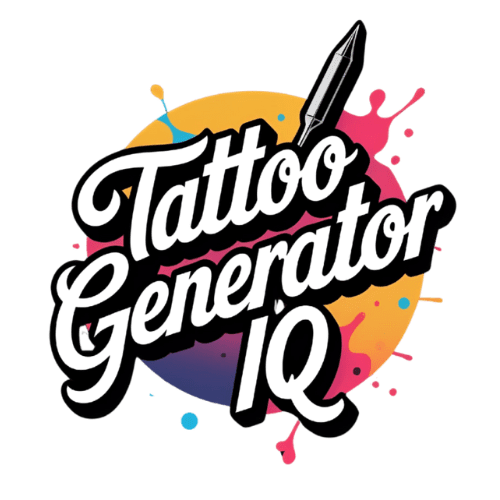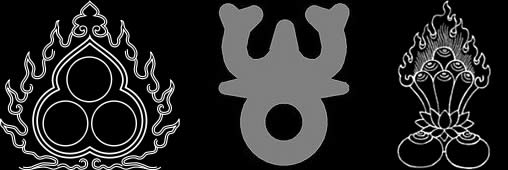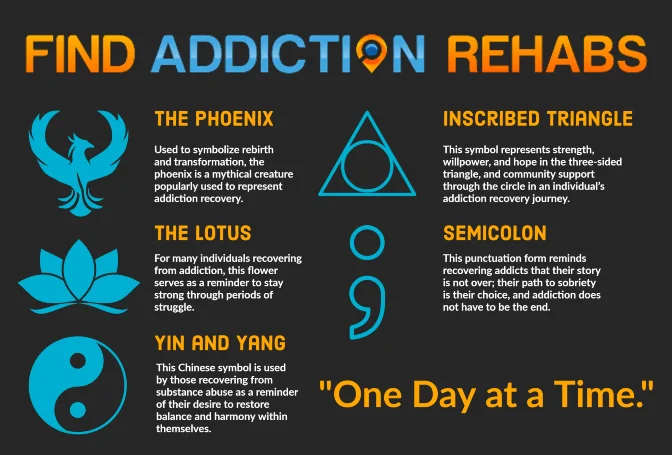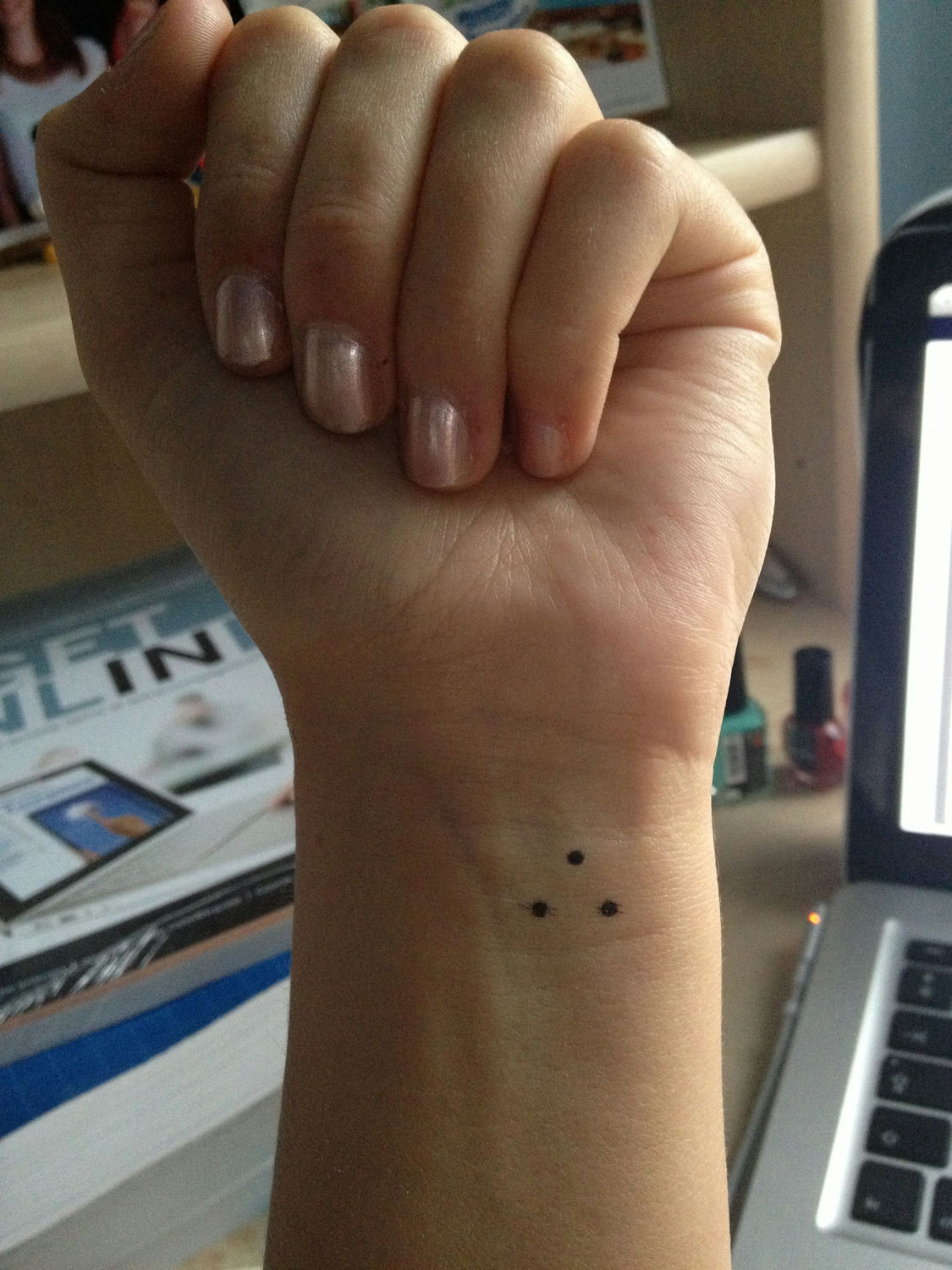3 Dot Tattoo Meaning: The Shocking Cultural Truth Behind This Misunderstood Symbol
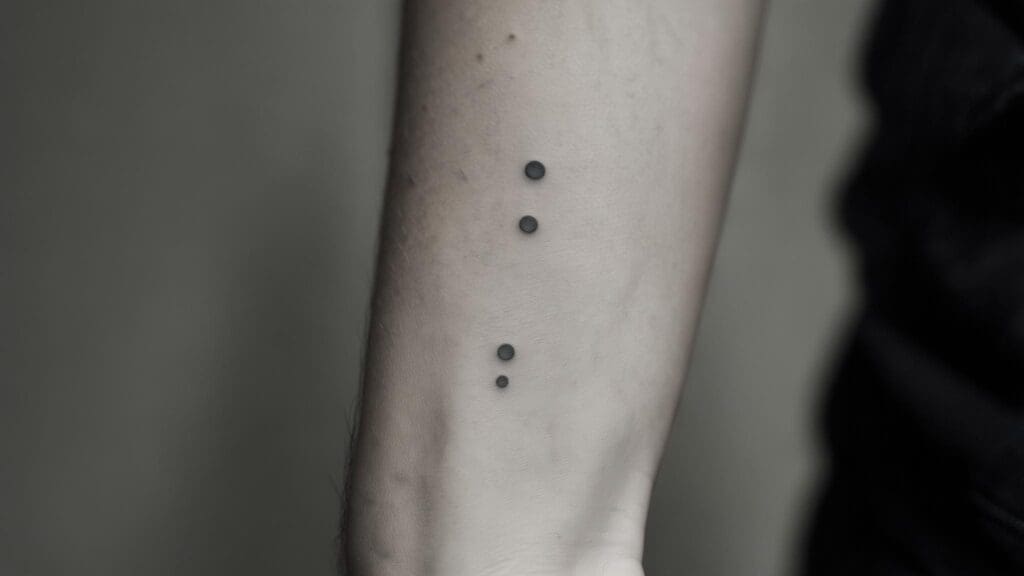
The three dots tattoo represents far more than its simple appearance suggests, carrying profound spiritual, cultural, and personal meanings that challenge widespread misconceptions about criminal associations. While many dismiss these minimalist designs as “trend tattoos,” research reveals that three dots in succession serve as powerful symbols of continuance, spiritual journey, and personal transformation across diverse communities worldwide.
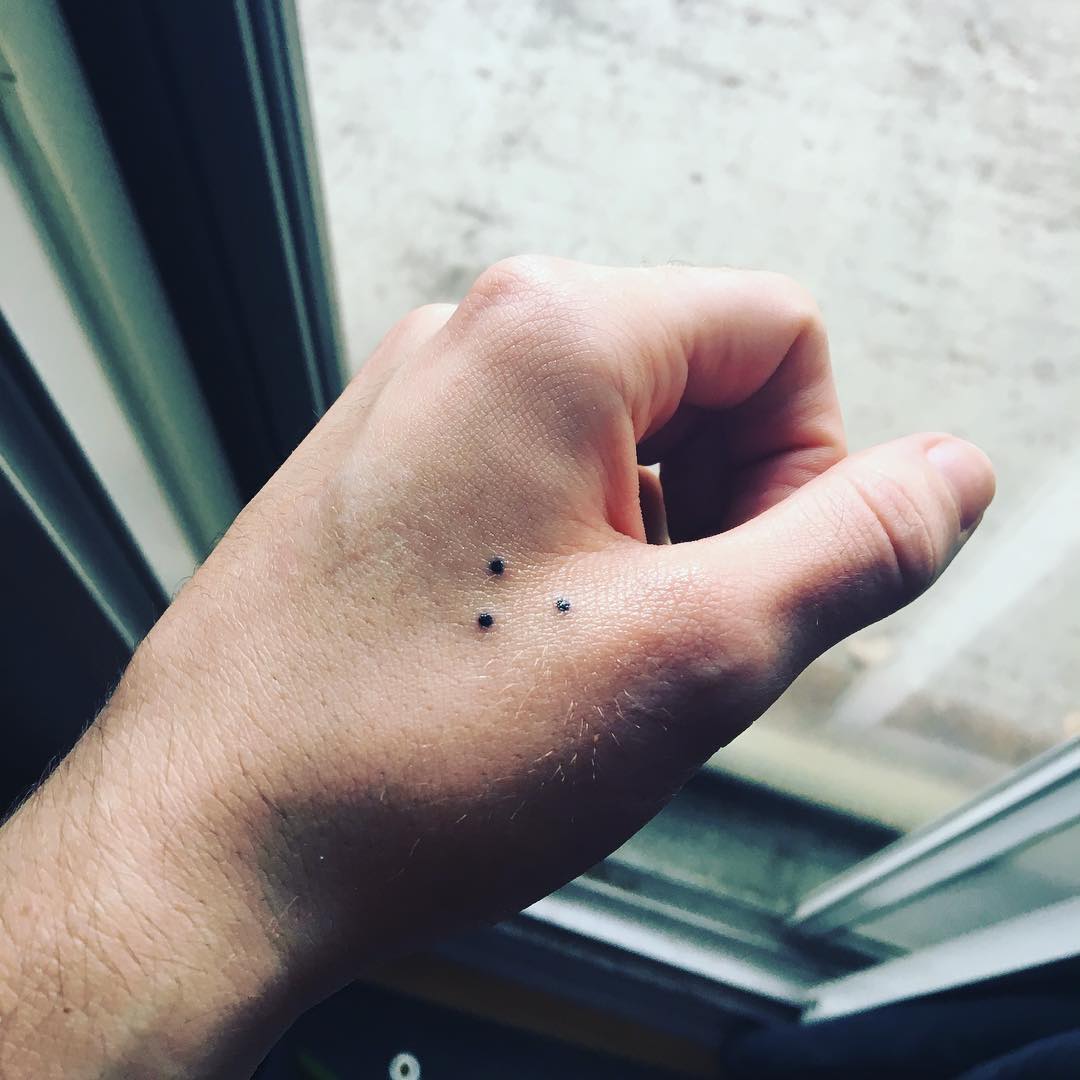
Source: inkppl.com
Table of Contents
- Cultural Significance Beyond Prison Walls
- Modern Reclamation and Personal Empowerment
- Placement Psychology and Social Signaling
- Design Evolution and Artistic Innovation
- Psychological Ownership and Identity Reconstruction
- Legal and Professional Navigation Strategies
- Intergenerational Impact and Family Dynamics
TL;DR
- Three dot tattoos carry deep spiritual, cultural, and personal meanings that extend far beyond criminal associations
- Recovery communities have transformed these symbols into powerful markers of sobriety and personal growth
- Placement location communicates different messages about your intentions and relationship with society
- Modern tattoo artists are creating innovative designs that distinguish positive meanings from negative stereotypes
- Getting a three dot tattoo represents psychological ownership and deliberate identity reconstruction
- Professional and legal considerations require strategic planning for workplace acceptance and social navigation
- Family dynamics and intergenerational relationships need careful management when choosing this symbol
Cultural Significance Beyond Prison Walls
I’ve spent years researching tattoo symbolism, and I can tell you that the 3 dot tattoo meaning extends far beyond what popular culture suggests. These symbols actually represent sacred concepts in Christianity (Father, Son, Holy Spirit), temporal philosophy (past, present, future), and holistic wellness practices (mind, body, spirit).
Religious and spiritual communities adopted three dots as minimalist representations of complex theological concepts, allowing discrete expression of faith without overt religious displays. This approach gives believers a way to carry their spiritual identity without triggering workplace discrimination or unwanted evangelical conversations.
Cultural movements during the 1960s-70s civil rights era transformed three dots into symbols of resistance, solidarity, and heritage preservation. The Chicano art movement specifically embraced these symbols as markers of cultural identity rather than criminal activity. According to cultural research, the three dots tattoo represents “Mi Vida Loca,” which translates to “my crazy life,” often meaning the struggles of the underprivileged and minorities as “a way of saying, ‘my life is crazy, but I’m thankful for it,’ or ‘life may be crazy, but I’m still here.'” Lucky Deville Tattoo Co.
Latino communities embrace “mi vida loca” as cultural identity rather than criminal activity, while Asian philosophies connect three dots to Buddhist principles and meditation practices. Understanding these deeper meanings reveals how communities have used this symbol for spiritual growth, cultural resistance, and personal philosophy long before any prison associations developed.

Source: inkppl.com
The Sacred Trinity Interpretation
Christian symbolism finds deep meaning in three dots representing the holy trinity, while temporal philosophy uses them to mark life transitions and personal growth phases. Contemporary Christians use three dots as coded spiritual language that maintains religious significance while appearing secular to outside observers.
Temporal philosophy applications help individuals process major life transitions by assigning each dot to represent learning phases and personal evolution. This framework transforms simple dots into powerful tools for self-reflection and motivation during difficult periods.
Holistic wellness communities place these symbols at chakra points and pulse locations for daily mindfulness practices. Each interpretation transforms simple dots into powerful spiritual tools that guide daily living and personal development. Contemporary practitioners choose three dots specifically because they maintain spiritual significance while avoiding obvious religious displays that might attract unwanted attention or workplace discrimination.
For those interested in exploring deeper spiritual connections, our comprehensive guide to spiritual tattoo ideas offers additional meaningful symbols that complement the 3 dot tattoo meaning across various faith traditions.
| Spiritual Interpretation | Meaning | Community Usage |
|---|---|---|
| Christian Trinity | Father, Son, Holy Spirit | Discrete faith expression |
| Temporal Philosophy | Past, Present, Future | Life transition marking |
| Buddhist Three Jewels | Buddha, Dharma, Sangha | Meditation practice |
| Holistic Wellness | Mind, Body, Spirit | Daily mindfulness |
| Hindu Triad | Creation, Preservation, Destruction | Spiritual balance |
Religious Symbolism in Modern Context
Modern Christians choose three dot tattoos to represent Father, Son, and Holy Spirit in workplace-appropriate ways. This minimalist approach maintains deep spiritual significance while avoiding potential religious discrimination or unwanted evangelical conversations.
Workplace religious expression laws protect tattoo choices, but three dots avoid triggering discriminatory assumptions that more obvious religious symbols might create. Private spiritual practices benefit from discrete visual cues that prompt prayer, meditation, or scriptural reflection without drawing external attention.
Faith community recognition allows believers to identify each other through shared symbolic language while maintaining professional appearances. Daily spiritual discipline gets reinforced through constant visual reminders that integrate seamlessly into secular environments.
Cultural celebrations worldwide continue to embrace three-dot symbolism, with recent reports showing that “In India, the triple dot is often used to ward off the evil eye” Bombay Times during traditional Garba celebrations, demonstrating the symbol’s protective spiritual significance across cultures.
Temporal Philosophy Applications
Past-present-future interpretations help people mark significant life transitions and personal growth milestones. Each dot represents different phases of learning and development, creating visual accountability for progress made and goals ahead.
Life transition markers provide psychological anchoring during periods of uncertainty, helping individuals maintain perspective on personal growth trajectories. Milestone celebration systems use each dot to represent completed challenges, current struggles, and future aspirations in visual format.
Personal development accountability gets enhanced through permanent reminders of commitment to growth and positive change. Therapeutic applications help trauma survivors process past experiences, engage present healing, and envision future recovery.
Sarah, a 28-year-old therapist, chose three dots on her inner wrist after completing her master’s degree. The first dot represents her difficult childhood, the second her current career building phase, and the third her future goal of opening a trauma treatment center. She touches the dots during stressful client sessions as a reminder of her personal growth journey and professional purpose.
Holistic Wellness Communities
Mind-body-spirit practitioners adopt three dots as daily reminders of balanced living. Strategic placement at chakra points or pulse locations creates opportunities for mindfulness throughout busy days.
Chakra alignment practices use dot placement to stimulate energy centers and promote physical, emotional, and spiritual balance. Mindfulness integration transforms routine activities into meditation opportunities through tactile and visual dot reminders.
Wellness community identification allows practitioners to recognize each other and share resources without verbal disclosure of spiritual practices. Daily balance maintenance gets supported through constant physical cues that prompt attention to mind-body-spirit harmony.
Source: medicalnewstoday.com
Latino Cultural Heritage Connections
Latino communities embrace three dots as representations of “mi vida loca” – a cultural statement about accepting life’s unpredictability rather than criminal activity. The Chicano art movement of the 1960s-70s transformed these symbols into markers of cultural resistance and identity.
Cultural reclamation efforts deliberately transform negative stereotypes into positive identity markers that celebrate Latino heritage and resilience. Chicano art movement history provides legitimate cultural context that predates and supersedes criminal associations in mainstream understanding.
Family honor traditions use three dots to represent three generations, honoring grandparents, parents, and children in continuous heritage lines. Intergenerational family honor systems use three dots to represent continuity, responsibility, and cultural preservation across generations.
Chicano Art Movement Influence
The 1960s-70s Chicano art movement adopted three dots as symbols of cultural resistance, identity, and solidarity during civil rights struggles. Artists used these symbols to represent struggle, survival, and community strength.
Civil rights era documentation proves three dots served as symbols of legitimate political resistance and cultural pride before criminal adoption. Artistic movement history provides educational context that challenges negative stereotypes and promotes cultural understanding.
Community solidarity expressions used three dots to identify shared struggles and mutual support systems during discriminatory periods. Cultural preservation efforts maintain Chicano art traditions through continued use of historically significant symbols in contemporary contexts.
Family Honor Representations
Three dots symbolize three generations of family – grandparents, parents, and children – in continuous lines of heritage and responsibility. This interpretation emphasizes family loyalty, cultural transmission, and intergenerational support systems.
Generational responsibility systems use three dots to represent commitment to honoring past sacrifices while providing for future family success. Cultural transmission practices embed family values and traditions into permanent visual reminders of heritage obligations.
Family loyalty expressions demonstrate commitment to collective success over individual achievement through shared symbolic language. Heritage preservation efforts maintain cultural identity across generations through consistent symbolic representation and meaning.
Asian Philosophical Interpretations
Eastern philosophy embraces three dots as representations of Buddhist principles, Taoist balance, and meditation practices focused on achieving inner harmony. The Buddhist Three Jewels (Buddha, Dharma, Sangha) find expression through three dots that serve as daily reminders of spiritual path principles.
Buddhist Three Jewels symbolism provides ancient spiritual foundation that legitimizes three dots as sacred rather than criminal symbols. Meditation practice integration uses visual cues to prompt mindfulness, breathing exercises, and spiritual reflection throughout daily activities.
Eastern philosophy adoption by Western practitioners creates cross-cultural appreciation and understanding of three dot meanings. Taoist practitioners use three dots to represent balance between opposing forces and natural harmony.
Buddhist Three Jewels Connection
Buddha, Dharma, and Sangha (the Three Jewels) are represented through three dots, serving as daily reminders of Buddhist path principles for practitioners. This ancient spiritual framework transforms simple dots into powerful tools for maintaining spiritual discipline and community connection.
Ancient spiritual tradition provides historical legitimacy that predates and supersedes any criminal associations with three dot symbols. Daily practice reminders help Buddhist practitioners maintain spiritual discipline through constant visual cues for meditation and mindfulness.
Community identification allows Buddhist practitioners to recognize each other and share spiritual resources without verbal disclosure. Secular appearance maintains workplace appropriateness while preserving deep spiritual significance for personal practice and development.
Research shows that three dots are considered sacred across many religions and belief systems, as “three is considered to be the numeral that represents the ‘whole’ of the universe, correlating to time, the human body and the world as we know it,” and can represent “beginning, middle and end, heaven, earth and the waters, or body, soul and spirit.” Tattoodo
Source: vanishingtattoo.com
Modern Reclamation and Personal Empowerment
Contemporary tattoo culture actively reclaims three dot symbols from criminal associations, transforming them into powerful statements of personal growth, recovery, and positive life changes. Recovery communities have adopted three dots to represent different stages of addiction recovery, creating positive associations that override negative stereotypes.
Cultural reclamation movements deliberately transform stigmatized symbols into empowerment tools through conscious meaning-making and community support. Recovery community adoption creates new social contexts where three dots represent healing, growth, and positive life transformation rather than criminal activity.
Personal philosophy statements allow individuals to create unique meanings that reflect their life experiences and values. This reclamation process represents deliberate acts of empowerment where people refuse to let society define their symbols or identity.
Recovery and Sobriety Symbolism
Recovery communities have transformed three dots into powerful markers of sobriety milestones and spiritual growth. The dots represent the first three steps of twelve-step programs: admission of powerlessness, belief in higher power, and decision to turn life over to spiritual guidance.
Twelve-step program integration provides structured spiritual framework that transforms three dots into legitimate recovery tools rather than criminal symbols. Milestone celebration systems create positive reinforcement and accountability through visual progress markers that celebrate personal achievements.
Milestone marking systems use each dot to celebrate significant sobriety achievements like 30 days, 90 days, and one year clean. Support network identification allows recovery community members to recognize each other discretely without verbal disclosure of addiction history.
Those exploring recovery-themed body art often discover that semicolon tattoo meaning provides another powerful symbol of overcoming struggles, creating meaningful combinations with the traditional 3 dot tattoo meaning for comprehensive personal transformation narratives.
Source: findaddictionrehabs.com
Twelve-Step Program Connections
The first three steps of recovery programs find perfect expression in three dots: admission of powerlessness, belief in higher power, and decision to turn life over to spiritual guidance. This framework transforms three dots into daily reminders of spiritual principles that guide recovery decisions.
Spiritual program integration provides legitimate recovery framework that establishes three dots as tools for healing rather than symbols of criminal activity. Daily reminder systems help recovery community members maintain spiritual discipline through constant visual cues for program principles and practices.
Program step representation creates structured meaning that supports long-term sobriety through consistent spiritual practice and community connection. Secular appearance maintains workplace and social appropriateness while preserving deep recovery significance for personal spiritual development.
Milestone Marking Systems
Each dot represents significant sobriety milestones like 30 days, 90 days, and one year, creating visual accountability and celebration of progress achieved. This system transforms three dots into powerful motivation tools that remind individuals of their recovery journey and future goals.
Achievement celebration systems create positive associations with three dots through consistent reinforcement of personal success and community recognition. Visual accountability tools help maintain sobriety motivation through constant reminders of progress made and goals ahead.
Progress tracking methods provide structured framework for measuring recovery success and maintaining long-term commitment to positive life changes. Community celebration practices reinforce positive meanings through shared recognition of individual achievements and collective support systems.
Marcus, a 35-year-old construction worker, got three dots tattooed behind his ear after completing his first year of sobriety. Each dot represents a milestone: 30 days (acknowledging the problem), 90 days (building new habits), and one year (commitment to long-term recovery). He touches the dots during AA meetings as a reminder of his progress and motivation to continue his journey.
Support Network Identification
Recovery community members use three dots as discrete identification markers, allowing mutual recognition and support without verbal disclosure of addiction history. This system creates safe spaces for connection and resource sharing while maintaining privacy about personal recovery status.
Discrete identification systems allow recovery community members to recognize each other and offer support without requiring verbal disclosure of addiction history. Safe space creation enables mutual support and resource sharing through shared symbolic language that maintains privacy while building connection.
Community building practices use three dots as foundation for developing supportive relationships based on shared recovery experience and commitment. Privacy protection allows individuals to maintain professional and social relationships while accessing recovery community support when needed.
Personal Philosophy Statements
Modern interpretations focus on individual meaning-making, with people creating personal significance that reflects their unique life experiences and values. Life lesson representations use each dot to symbolize major learning experiences gained through hardship.
Individual meaning-making processes empower people to define their own symbols rather than accepting society’s interpretations or assumptions. Personal empowerment strategies use three dots as tools for maintaining motivation, accountability, and commitment to positive life changes and growth.
Goal achievement markers transform three dots into motivation and accountability tools for personal development. This individualized approach allows people to reclaim the symbol completely from any external associations. Identity reclamation efforts deliberately transform stigmatized symbols into personal empowerment tools through conscious choice and meaning creation.
Life Lesson Representations
Each dot represents a major life lesson learned through hardship, creating visual reminders of personal growth and wisdom gained through experience. This interpretation transforms three dots into powerful tools for maintaining perspective during difficult times.
Wisdom preservation systems use three dots to maintain access to important life lessons and prevent repeating past mistakes through constant visual reminders. Personal growth documentation creates permanent records of learning experiences that guide future decision-making and maintain perspective during challenges.
Experience integration processes help individuals apply lessons learned through consistent visual cues that prompt reflection and conscious choice-making. Hardship transformation methods convert negative experiences into positive learning opportunities through deliberate meaning-making and symbolic representation.
Goal Achievement Markers
Three dots can represent completed goals, ongoing projects, and future aspirations, serving as motivation and accountability tools for personal development. This system transforms the symbol into a personal success tracking method that maintains focus on growth and achievement.
Achievement tracking systems provide visual accountability for personal development goals and maintain motivation through constant progress reminders. Future planning tools use three dots to represent aspirations and maintain focus on long-term objectives despite short-term challenges or setbacks.
Commitment reinforcement methods create psychological accountability through permanent visual reminders of personal goals and values. Success celebration practices transform three dots into positive reinforcement tools that acknowledge progress and maintain momentum toward continued growth.
Source: tiktok.com
Placement Psychology and Social Signaling
The location of three dot tattoos communicates different messages about your intentions and relationship with society. Visible placements on hands, wrists, and face traditionally associated with criminal culture are being reclaimed by individuals making bold statements about personal transformation and authenticity.
Placement psychology reveals how location choices communicate different messages about personal intentions, social integration, and relationship with mainstream society. Social signaling strategies use tattoo visibility to control narrative and manage public perception while maintaining authentic personal expression.
Hidden placements carry more intimate personal meaning, representing private spiritual practices, recovery milestones, or family connections not intended for public interpretation. Professional considerations require weighing workplace acceptance against personal expression, often leading to strategic placement decisions that balance both needs.
Visible Placement Strategies
Hand, wrist, and face placements traditionally associated with criminal culture are being reclaimed by individuals making bold statements about personal transformation and authenticity. These visible locations require confidence and commitment to explaining personal meaning when questioned.
Bold reclamation strategies deliberately choose highly visible placements to challenge stereotypes and demonstrate confidence in personal transformation. Professional balance techniques allow individuals to maintain career opportunities while expressing authentic identity through strategic placement and coverage options.
Career-conscious individuals must weigh workplace acceptance against personal expression, often choosing placements that can be covered during professional interactions while remaining visible in personal settings. Social confidence building results from successfully navigating public reactions and maintaining positive self-image despite potential negative assumptions.
Before committing to visible placement, many consider the physical discomfort involved by consulting our detailed tattoo pain scale for women to understand how hand and wrist locations rank among the most sensitive areas for receiving the 3 dot tattoo meaning.
Professional Consideration Factors
Career-conscious individuals must weigh workplace acceptance against personal expression, often choosing placements that can be covered during professional interactions while remaining visible in personal settings. Industry standards vary significantly, with healthcare, education, and finance maintaining stricter appearance policies while creative and tech industries show greater acceptance.
Industry research requirements help individuals understand specific workplace policies and cultural norms before making permanent placement decisions. Strategic coverage planning allows professional compliance while maintaining personal expression through careful placement and clothing choices.
Career advancement considerations factor long-term professional goals into placement decisions to avoid limiting future opportunities. Workplace navigation strategies prepare individuals for potential discrimination while building confidence to address misconceptions about tattoo meaning.
| Industry Sector | Visibility Acceptance | Coverage Requirements | Career Impact |
|---|---|---|---|
| Healthcare | Low | Complete coverage required | High limitation |
| Education | Low-Medium | Situational coverage | Medium limitation |
| Finance/Banking | Low | Complete coverage required | High limitation |
| Creative/Arts | High | Minimal restrictions | Low limitation |
| Technology | Medium-High | Flexible policies | Low limitation |
| Retail/Service | Medium | Company-dependent | Medium limitation |
Hidden Placement Significance
Concealed three dot tattoos often carry more intimate personal meaning, representing private spiritual practices, recovery milestones, or family connections not intended for public interpretation. Hidden placements near heart, behind ear, or on inner wrist allow for private meditation and reflection without external judgment or misinterpretation.
Private meaning preservation allows individuals to maintain intimate spiritual or personal practices without external interference or misinterpretation. Meditation integration uses hidden placement locations to create discrete opportunities for mindfulness and reflection throughout daily activities.
These locations prioritize personal significance over social communication. Personal sanctuary creation establishes private spaces for spiritual practice and self-reflection through strategically placed symbolic reminders.
Spiritual Practice Integration
Hidden placements near heart, behind ear, or on inner wrist allow for private meditation and reflection without external judgment or misinterpretation. These locations create opportunities for discrete spiritual practice throughout busy days.
Sacred space creation uses hidden tattoo placement to establish private areas for spiritual practice and meditation without external interference. Daily practice integration transforms routine activities into opportunities for mindfulness and spiritual reflection through discrete visual and tactile cues.
Privacy protection maintains sacred meaning and personal spiritual practices without requiring explanation or justification to others. Intimate connection development deepens personal relationship with chosen spiritual or philosophical practices through private symbolic representation.
High-profile celebrities have embraced hidden three-dot tattoos, with “eagled-eyed fans noticed three dots on the left side of her chest at the Cannes Film Festival” J-14, demonstrating how concealed placement allows for personal meaning while maintaining professional image.
Source: tiktok.com
Design Evolution and Artistic Innovation
Contemporary tattoo artists are reimagining three dot designs through creative styling, color incorporation, and artistic elements that distinguish positive meanings from traditional criminal associations. Geometric integration methods transform basic dots into complex mandala elements and sacred geometry patterns.
Artistic enhancement techniques elevate simple dots into sophisticated visual statements that communicate positive intentions while avoiding stereotypical appearances. Design differentiation strategies help individuals create unique interpretations that stand apart from criminal associations through creative styling and personalization.
Color psychology applications allow personalization through different emotional meanings – blue for peace, green for growth, red for passion. Cultural fusion approaches blend three dot foundations with heritage symbols, creating unique pieces that honor both traditional meanings and personal identity. Size and scale variations create different visual impacts, from subtle minimalist statements to bold artistic declarations.
Artistic Enhancement Techniques
Modern three dot tattoos incorporate geometric patterns, watercolor effects, and symbolic elements that elevate simple dots into sophisticated artistic statements. Sacred geometry principles transform basic concepts into visually striking pieces that maintain symbolic meaning while adding artistic depth.
Creative transformation methods convert simple symbols into complex artistic expressions that communicate sophistication and positive intention. Visual distinction strategies help separate positive meanings from negative stereotypes through innovative design approaches and artistic enhancement.
These enhancements help distinguish positive interpretations from traditional criminal associations through creative expression and personalized design elements. Artistic legitimacy building establishes three dot tattoos as valid creative expressions rather than criminal markers through sophisticated design execution.
Artists seeking to enhance the traditional 3 dot tattoo meaning often explore our extensive collection of simple tattoo ideas for complementary elements that can transform basic dots into sophisticated artistic statements while preserving their symbolic significance.
Source: inkppl.com
Geometric Integration Methods
Sacred geometry principles transform basic dots into complex mandala elements, creating visually striking pieces that maintain three dot symbolism while adding artistic depth. These mathematical patterns add spiritual significance and visual complexity that elevates the design beyond simple dots.
Mathematical precision creates visually compelling designs that demonstrate artistic sophistication and spiritual depth beyond simple dot placement. Sacred geometry applications add layers of meaning that connect three dots to universal patterns and spiritual principles found across cultures.
Artistic complexity development transforms simple symbols into sophisticated visual statements that command respect and appreciation. Spiritual enhancement techniques integrate mathematical harmony with personal symbolism to create meaningful and beautiful artistic expressions.
Color Psychology Applications
Different colors convey distinct emotional meanings – blue for peace, green for growth, red for passion – allowing personalization that reflects individual personality and intentions. Color choices help distinguish personal interpretations from traditional black dot associations.
Emotional communication systems use color psychology to convey specific feelings and intentions that align with personal values and spiritual practices. Personalization techniques allow individuals to customize traditional symbols with colors that reflect their unique personality traits and life experiences.
Visual differentiation methods help separate positive personal meanings from negative stereotypes through distinctive color choices and artistic expression. Psychological impact enhancement uses color theory to create tattoos that support emotional well-being and positive self-image through daily visual reinforcement.
Cultural Fusion Approaches
Artists blend three dot foundations with cultural symbols from the wearer’s heritage, creating unique pieces that honor both traditional meanings and personal identity. These fusion designs celebrate multicultural backgrounds while maintaining three dot significance.
Heritage celebration methods combine three dot symbolism with cultural elements that honor family background and personal identity. Identity integration techniques create complex designs that reflect multicultural experiences and diverse spiritual or philosophical influences.
Cultural respect practices ensure appropriate use of traditional symbols while creating meaningful personal expressions that honor heritage. Personal narrative development uses fusion approaches to tell complete life stories through layered symbolic representation and artistic creativity.
Maria, a 26-year-old graphic designer of Mexican-Irish heritage, collaborated with her tattoo artist to create three dots surrounded by Celtic knotwork and Aztec sun rays on her shoulder blade. This fusion design honors her mixed heritage while maintaining the three-dot representation of past struggles, present growth, and future hopes, creating a unique artistic statement that reflects her complete identity.
Size and Scale Considerations
Variation in dot size, spacing, and arrangement creates different visual impacts and social interpretations, from subtle minimalist statements to bold artistic declarations. Minimalist trends appeal to professionals seeking discrete symbolism that doesn’t attract unwanted attention.
Visual impact control allows individuals to manage social reactions and professional acceptance through strategic size and placement decisions. Statement intensity variation provides options for different comfort levels with public visibility and potential social commentary or questions.
Bold statement variations make strong personal declarations about reclaiming symbols and refusing to be defined by others’ interpretations or societal stereotypes.
Minimalist Trend Influence
Tiny, precisely placed dots appeal to professionals and individuals seeking subtle symbolism that doesn’t attract unwanted attention or assumptions about criminal associations. Minimalist approaches maintain symbolic meaning while prioritizing discretion and workplace appropriateness.
Professional compatibility ensures career advancement opportunities remain available while maintaining authentic personal expression through discrete symbolic choices. Subtle communication methods allow personal meaning expression without triggering negative assumptions or requiring constant explanation to others.
These designs satisfy personal expression needs without compromising professional opportunities or social acceptance. Workplace integration strategies balance personal authenticity with professional requirements through careful design and placement considerations.
The growing popularity of minimalist body art has led many to explore tiny tattoo ideas that complement the discrete nature of small three-dot designs, allowing the 3 dot tattoo meaning to remain personal while maintaining professional appropriateness.
Bold Statement Variations
Larger, more elaborate three dot designs make strong personal statements about reclaiming symbols and refusing to be defined by others’ interpretations or societal stereotypes. These bold approaches demonstrate confidence in personal transformation and commitment to challenging negative assumptions.
Stereotype challenge strategies use bold design choices to confront negative assumptions and promote positive understanding of three dot symbolism. Personal empowerment demonstration shows confidence in individual transformation and refusal to accept societal limitations or judgments.
Bold variations require strong self-assurance and willingness to engage in educational conversations about positive meanings. Educational opportunity creation provides platforms for sharing positive meanings and challenging misconceptions through visible artistic expression.
Source: theblackhattattoo.com
Psychological Ownership and Identity Reconstruction
Getting a three dot tattoo often represents deliberate acts of reclaiming personal narrative, where individuals transform societal stigma into empowerment through conscious choice and meaning-making. Stigma transformation mechanisms help people convert negative associations into positive identity markers through psychological reframing techniques.
Identity reconstruction processes empower individuals to actively reshape their self-concept and public persona through deliberate symbolic choices. Psychological empowerment strategies transform external stigma into internal strength through conscious meaning-making and community support systems.
Identity anchoring functions use three dots as permanent reminders of chosen identity, helping maintain consistency with transformed self-concept during challenging moments. This process involves narrative reauthoring, social proof strategies, and cognitive dissonance resolution that supports long-term positive change.
Stigma Transformation Mechanisms
People actively convert negative associations into positive identity markers through psychological reframing techniques that shift focus from external judgment to internal validation. Narrative reauthoring processes help individuals rewrite their personal stories by choosing three dots as symbols of overcoming adversity rather than succumbing to it.
Reframing techniques shift psychological focus from external judgment to internal validation, empowering individuals to define their own symbolic meanings. Community building creates supportive social contexts that reinforce positive interpretations and provide validation for personal transformation efforts.
Social proof strategies build communities of support by connecting with others who share similar positive interpretations, creating new social contexts that reinforce chosen meanings. Narrative control allows individuals to actively shape their life story rather than accepting societal definitions or assumptions about their character.
Narrative Reauthoring Process
Individuals rewrite their personal stories by choosing three dots as symbols of overcoming adversity rather than succumbing to it, creating psychological distance from past mistakes. This process involves consciously choosing positive interpretations that align with current values and future goals.
Story transformation techniques help individuals reframe past experiences as learning opportunities rather than defining limitations or character flaws. Psychological distance creation separates current identity from past mistakes through conscious symbolic choices that represent growth and positive change.
Future orientation development uses three dots to maintain focus on personal goals and values rather than dwelling on past struggles or societal judgments. Empowerment narrative building creates positive self-concept through deliberate meaning-making that emphasizes strength, resilience, and personal transformation.
Social Proof Strategies
Wearers build communities of support by connecting with others who share similar positive interpretations, creating new social contexts that reinforce chosen meanings. These communities provide validation and encouragement for personal transformation efforts.
Community validation systems provide emotional support and reinforcement for positive symbolic interpretations through shared experience and understanding. Social context creation establishes new reference groups that support personal transformation rather than reinforcing negative stereotypes or past behaviors.
Peer support networks offer practical advice and emotional encouragement for navigating social challenges related to three dot tattoo choices. Collective empowerment builds individual confidence through group solidarity and shared commitment to positive symbolic reclamation efforts.
Cognitive Dissonance Resolution
The tension between negative stereotypes and positive personal meaning gets resolved through consistent behavioral choices that demonstrate the wearer’s actual values and character. This process requires ongoing commitment to positive actions that align with chosen symbolic meaning.
Behavioral consistency requirements demand ongoing alignment between symbolic choices and daily actions to maintain psychological integrity and personal authenticity. Value demonstration strategies use consistent positive behavior to challenge negative assumptions and build credibility for alternative symbolic interpretations.
Internal harmony achievement resolves psychological tension through deliberate choices that align personal values with symbolic representation. Character building processes strengthen personal identity through consistent actions that support chosen meanings and demonstrate authentic transformation.
Source: inkupaw.com
Identity Anchoring Functions
Three dots serve as permanent reminders of chosen identity, helping individuals maintain consistency with their transformed self-concept during challenging moments. Behavioral commitment devices use the permanent nature of tattoos to create psychological commitment to positive life changes.
Permanent reminder systems create constant visual cues that reinforce commitment to positive identity and personal transformation goals. Psychological commitment mechanisms use tattoo permanence to strengthen dedication to positive life changes and prevent regression to past behaviors.
Daily affirmation tools provide constant reinforcement of personal growth decisions, serving as touchstones for maintaining motivation and remembering progress made.
Behavioral Commitment Devices
The permanent nature of tattoos creates psychological commitment to positive life changes, making it harder to revert to old patterns without confronting symbolic contradiction. This commitment device function helps maintain consistency between chosen identity and daily actions.
Permanence psychology creates stronger commitment to positive change through irreversible symbolic choices that require ongoing behavioral consistency. Contradiction avoidance mechanisms help maintain positive behaviors by creating psychological discomfort when actions don’t align with symbolic meaning.
Decision reinforcement systems strengthen commitment to personal transformation through constant visual reminders of chosen identity and values. Accountability creation uses permanent symbols to maintain focus on positive goals and prevent regression to previous negative behavior patterns.
Daily Affirmation Tools
Visible dots provide constant reinforcement of personal growth decisions, serving as touchstones for maintaining motivation and remembering progress made. These daily reminders help individuals stay focused on positive goals during stressful or challenging periods.
Motivation maintenance systems provide consistent encouragement through visual reminders that reinforce positive self-concept and personal growth achievements. Progress recognition tools help individuals acknowledge their transformation journey and maintain perspective during temporary setbacks or challenges.
Self-encouragement mechanisms create opportunities for positive self-talk and affirmation throughout daily activities and routine interactions. Goal focus enhancement uses constant visual cues to maintain attention on personal development objectives and prevent distraction by negative influences.
Legal and Professional Navigation Strategies
Understanding workplace policies, legal implications, and social navigation requires strategic thinking about how three dot tattoos affect professional opportunities and social interactions. Workplace accommodation approaches recognize increasing tattoo diversity while acknowledging that three dot designs still require careful consideration of industry norms and company culture.
Strategic planning requirements help individuals navigate complex professional and legal landscapes while maintaining authentic personal expression. Risk management strategies balance personal meaning with practical considerations for career advancement and legal protection.
Legal awareness requirements address how three dots can attract unwanted law enforcement attention based on assumed gang affiliations. Professional environments vary significantly in their acceptance levels, requiring research and strategic planning for career success.
Law enforcement documentation reveals that “the three dots, a common prison tattoo easily marked with amateur equipment, is said to be shorthand for ‘Mi Vida Loca,’ or ‘My Crazy Life'” and often appears “near the eye or on the face in a triangular shape,” according to prison officials who must learn to read these symbols for security purposes. Daily Mail
Workplace Accommodation Approaches
Professional environments increasingly recognize tattoo diversity, but three dot designs still require careful consideration of industry norms and company culture. Industry-specific considerations show that healthcare, education, and finance sectors maintain stricter appearance standards, while creative industries and tech companies show greater acceptance.
Industry analysis helps individuals understand specific workplace cultures and policies before making permanent tattoo decisions that might affect career opportunities. Communication strategies prepare individuals to address potential misconceptions and educate others about positive symbolic meanings in professional contexts.
Disclosure strategy development involves proactive communication about tattoo meaning to prevent misunderstandings and control narrative before others make assumptions. Career planning integration considers long-term professional goals and potential advancement opportunities when making tattoo placement and design decisions.
Understanding workplace dynamics becomes crucial when considering the financial investment, as our comprehensive guide on how much tattoos cost helps individuals budget for quality artistry that enhances the professional appearance of their 3 dot tattoo meaning expression.
Industry-Specific Considerations
Healthcare, education, and finance sectors maintain stricter appearance standards, while creative industries and tech companies show greater acceptance of visible tattoos. Understanding industry culture helps individuals make informed decisions about placement and design choices.
Sector research requirements help individuals understand specific industry standards and cultural expectations before making permanent tattoo commitments. Policy analysis reveals formal and informal workplace rules that might affect career advancement opportunities and professional relationships.
Some fields require complete coverage while others embrace tattoo diversity as part of inclusive workplace policies. Cultural assessment techniques evaluate workplace acceptance levels and potential discrimination risks in specific professional environments.
Disclosure Strategy Development
Proactive communication about tattoo meaning can prevent misunderstandings, allowing individuals to control the narrative before others make assumptions. Effective disclosure strategies involve timing, audience consideration, and clear explanation of positive symbolic meaning.
Narrative control techniques allow individuals to shape understanding and prevent negative assumptions through proactive education and clear communication. Timing optimization ensures disclosure occurs in appropriate contexts that maximize understanding and minimize potential negative reactions or judgments.
Strategic communication builds understanding and prevents discrimination based on misconceptions about three dot symbolism. Audience analysis helps tailor communication approaches to specific listeners and their likely concerns or misconceptions about three dot symbolism.
Career Advancement Planning
Long-term professional goals should factor into placement decisions, considering potential leadership roles that might require different appearance standards. Career advancement planning involves understanding promotion requirements and industry leadership expectations.
Future planning considerations help individuals anticipate changing professional requirements and make tattoo decisions that support long-term career goals. Leadership preparation addresses potential appearance expectations for management roles and executive positions in various industries.
Strategic thinking about future opportunities helps individuals make tattoo choices that support rather than limit professional growth. Opportunity assessment evaluates how tattoo choices might affect specific career paths and advancement possibilities within chosen professional fields.
Source: tommiemedia.com
Legal Awareness Requirements
While tattoos themselves aren’t illegal, three dot designs can attract unwanted law enforcement attention based on assumed gang affiliations. Police interaction protocols involve understanding how to respectfully explain tattoo meaning during law enforcement encounters to prevent escalation based on misidentification.
Legal protection strategies help individuals understand their rights while preparing for potential law enforcement interactions based on tattoo misconceptions. Documentation systems provide evidence of legitimate intent and personal meaning that can address legal concerns about gang affiliation assumptions.
Documentation strategies include keeping records of tattoo artist, date, and personal meaning to provide evidence of legitimate intent if questioned about potential gang connections.
Police Interaction Protocols
Understanding how to respectfully explain tattoo meaning during law enforcement encounters can prevent escalation based on misidentification or profiling. Effective protocols involve remaining calm, providing clear explanations, and demonstrating cooperative behavior.
De-escalation techniques help individuals navigate law enforcement interactions calmly and effectively while addressing misconceptions about tattoo meaning. Rights awareness education ensures individuals understand legal protections while maintaining cooperative relationships with law enforcement officers.
Preparation for these interactions helps individuals maintain their rights while addressing officer concerns about potential gang connections. Communication preparation develops clear, respectful explanations that address officer concerns while asserting legitimate personal meaning and intent.
Documentation Strategies
Keeping records of tattoo artist, date, and personal meaning can provide evidence of legitimate intent if questioned about potential gang connections. Documentation includes artist credentials, shop information, and written explanations of personal symbolism.
Evidence preparation creates paper trails that demonstrate legitimate tattoo acquisition and personal meaning rather than gang affiliation or criminal intent. Record keeping systems maintain important documentation that can address legal concerns and provide proof of legitimate symbolic choices.
These records help establish legitimate tattoo history and counter assumptions about criminal associations. Credibility building uses professional tattoo documentation to establish legitimate intent and counter negative assumptions about three dot symbolism.
Source: typecalendar.com
Intergenerational Impact and Family Dynamics
Three dot tattoos affect family relationships across generations, requiring navigation of parental concerns, children’s questions, and extended family reactions. Parental relationship management involves addressing family fears while maintaining personal autonomy through educational approaches and boundary setting techniques.
Family relationship navigation requires balancing personal authenticity with family harmony through education, communication, and boundary setting. Intergenerational communication strategies help bridge understanding gaps while maintaining healthy family relationships despite symbolic choices.
Child impact considerations require preparing for questions and potential social challenges while modeling positive self-acceptance. Age-appropriate explanations help children understand personal growth concepts without overwhelming them with complex adult issues.
Parental Relationship Management
Adult children with three dot tattoos often face family tension, requiring communication strategies that address parental fears while maintaining personal autonomy. Educational approaches help teach family members about positive meanings and cultural reclamation efforts to reduce anxiety.
Family education strategies help reduce parental anxiety through information sharing about positive meanings and cultural reclamation efforts. Boundary establishment creates healthy communication patterns that respect both personal autonomy and family relationships while addressing generational differences.
Boundary setting techniques establish clear communication about personal choices while respecting family concerns and maintaining healthy relationships.
Educational Approach Benefits
Teaching family members about positive meanings and cultural reclamation helps reduce anxiety and builds understanding across generational divides. Educational approaches involve sharing research, personal stories, and cultural context that challenges negative stereotypes.
Information sharing strategies help families understand cultural context and positive meanings that challenge negative stereotypes and reduce anxiety. Generational bridge building creates opportunities for deeper family understanding through education about symbolic reclamation and personal meaning.
Family education creates opportunities for deeper understanding and stronger relationships based on mutual respect and knowledge. Anxiety reduction techniques use factual information and personal stories to address family concerns and build support for individual choices.
Boundary Setting Techniques
Establishing clear communication about personal choices while respecting family concerns creates healthier relationships without sacrificing individual expression. Boundary setting involves asserting personal autonomy while maintaining family connections.
Autonomy assertion strategies help individuals maintain personal choice while preserving family relationships through respectful but firm boundary establishment. Relationship balance techniques create healthy family dynamics that honor both individual expression and family harmony through clear communication.
Effective techniques balance respect for family feelings with commitment to authentic self-expression and personal growth. Respect maintenance ensures family relationships remain strong while establishing personal boundaries that protect individual autonomy and authentic expression.
Child Impact Considerations
Parents with three dot tattoos must prepare for their children’s questions and potential social challenges while modeling positive self-acceptance. Age-appropriate explanation development creates simple, honest responses about tattoo meaning that help children understand personal growth concepts.
Parental modeling demonstrates positive self-acceptance and authentic identity while preparing children for potential social questions or challenges. Child preparation strategies equip young people with confident responses and understanding that supports family choices while navigating social situations.
School environment preparation anticipates potential peer questions or teacher concerns, equipping children with confident responses about family tattoo choices.
Age-Appropriate Explanation Development
Creating simple, honest explanations about tattoo meaning helps children understand personal growth concepts without overwhelming them with complex adult issues. Age-appropriate approaches focus on positive themes like learning from mistakes, helping others, and personal strength.
Developmental appropriateness ensures explanations match children’s cognitive abilities while providing honest information about family choices and personal meaning. Positive framing techniques focus on growth, learning, and strength themes that children can understand and feel proud of regarding family decisions.
These explanations build children’s confidence in family choices while providing tools for social navigation. Confidence building helps children develop positive responses to potential questions while maintaining pride in family choices and personal identity.
School Environment Preparation
Anticipating potential peer questions or teacher concerns allows parents to equip children with confident responses about family tattoo choices. School preparation involves communication with educators when necessary and coaching children on appropriate responses.
Proactive communication strategies prepare children for potential school questions while maintaining appropriate boundaries about family privacy and personal choices. Educator engagement involves strategic communication with teachers and administrators when necessary to prevent misunderstandings about family values.
Proactive preparation prevents children from feeling embarrassed or unprepared when questions arise about family tattoo choices. Peer interaction coaching helps children develop confident responses that maintain family pride while navigating social questions and potential challenges.
Jennifer, a 32-year-old teacher and mother, prepared her 8-year-old daughter Emma for potential questions about her three-dot tattoo by explaining that the dots represent “learning from hard times, being strong today, and hoping for good things tomorrow.” When Emma’s classmate asked about the tattoo during a school event, Emma confidently said, “My mom’s tattoo means she learned important lessons and helps other people learn too,” turning a potentially awkward moment into an opportunity to showcase family values and the positive 3 dot tattoo meaning.
Source: moretimemoms.com
How Tattoo Generator IQ Transforms Your Three Dot Vision Into Reality
Understanding the complex cultural psychology behind three dot tattoos reveals why personalized design becomes crucial for authentic expression. Tattoo Generator IQ’s advanced AI technology helps create distinctive three dot designs that communicate your intended message while avoiding unwanted associations.
AI-powered design technology creates personalized three dot variations that distinguish positive meanings from negative stereotypes through artistic innovation. Professional design tools provide comprehensive resources for developing meaningful tattoos that authentically represent personal transformation and cultural identity.
The platform’s custom style blending allows incorporation of cultural elements, artistic enhancements, and personal symbolism that transforms simple dots into meaningful artistic statements. Whether marking recovery milestones, honoring spiritual beliefs, or making philosophical statements, professional-quality design tools provide resources for creating authentic representations of your unique story and values.
Steps to Create Your Meaningful Three-Dot Design:
- Define your personal symbolism (spiritual, recovery, philosophical)
- Choose placement based on visibility preferences and professional considerations
- Select artistic enhancements (geometric patterns, colors, cultural elements)
- Use Tattoo Generator IQ to generate multiple variations exploring different styles
- Refine your chosen design with placement guides and artist-ready references
Source: tattooing101.com
Final Thoughts
Your three dot tattoo represents more than ink on skin – it becomes a permanent declaration of personal transformation, cultural identity, and spiritual growth. The journey from understanding cultural significance to creating meaningful design requires careful consideration of professional implications, family dynamics, and personal authenticity.
Symbol reclamation requires ongoing commitment to positive behavior and community building that reinforces chosen meanings over societal stereotypes. Personal authenticity depends on aligning tattoo choices with genuine values and life experiences rather than following trends or external expectations.
Success depends on thorough research, strategic planning, and commitment to positive meaning that aligns with your values and goals. Reclaiming symbols from negative associations takes courage, community support, and consistent behavior that demonstrates your authentic character.
Whether representing recovery milestones, spiritual practices, or philosophical beliefs, your three dots become powerful tools for maintaining motivation, building connections, and expressing your unique story. The key lies in creating designs that honor both traditional meanings and personal significance while navigating social and professional challenges with confidence.
